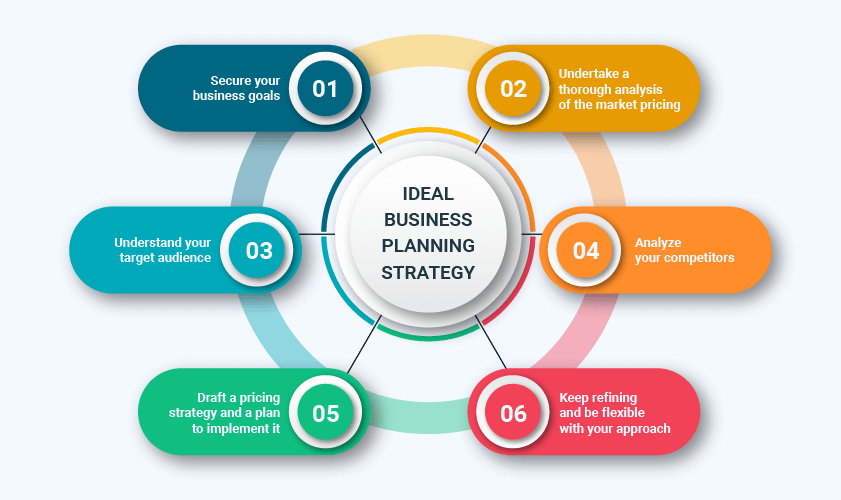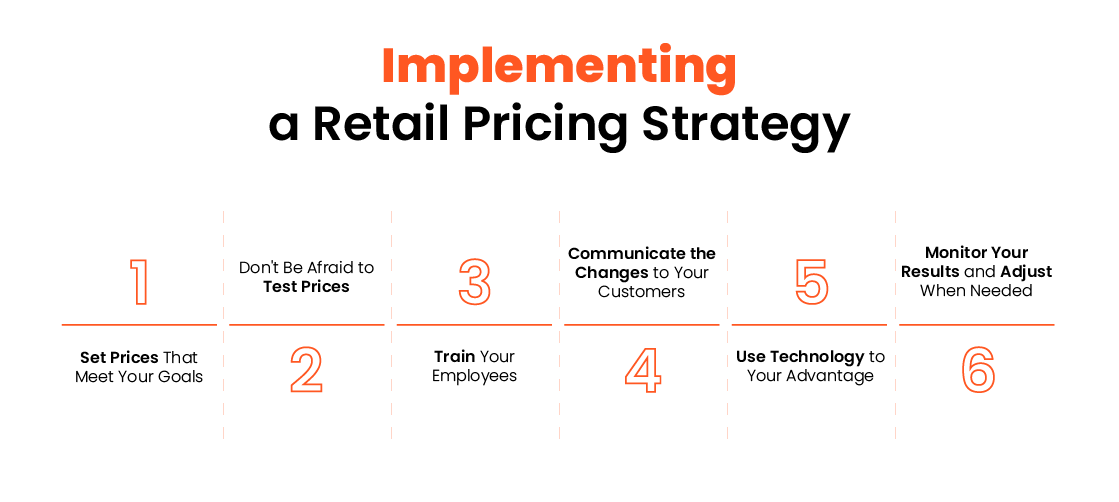Producing a Dynamic Pricing Strategy to Keep Ahead of the Competition
Producing a Dynamic Pricing Strategy to Keep Ahead of the Competition
Blog Article
Understanding Pricing Methods: An Overview to Boosting Competition
In an increasingly competitive landscape, mastering prices techniques is essential for companies intending to boost their market placement. Comprehending rival rates and the psychological facets that affect consumer behavior can develop a nuanced method to prices that resonates with target audiences.
Importance of Pricing Strategies
In the affordable landscape of service, the value of rates techniques can not be overstated. Pricing acts as a crucial lever for businesses, influencing both market positioning and customer perception. A distinct rates approach can enhance success, drive sales, and develop a competitive edge.

Recognizing customer actions is necessary in crafting prices methods. Insights into price sensitivity, perceived value, and affordable offerings permit organizations to adapt their pricing models as necessary. Additionally, routine analysis of rates effectiveness is essential to react to market characteristics and customer fads.
Inevitably, a robust prices technique is essential not just for revenue generation yet additionally for long-term service stability. It forms brand identification, influences consumer commitment, and plays a pivotal duty in the overall advertising strategy. Therefore, companies should invest time and resources in creating and fine-tuning their prices approaches to grow in an ever-evolving industry.
Sorts Of Prices Designs
How do businesses determine one of the most reliable method to value their solutions or products? The response depends on understanding numerous pricing models, each suited to different market problems and service purposes.
One widespread design is cost-plus rates, where a fixed portion is included to the overall expense of production. This method ensures that all expenses are covered while generating a profit. Conversely, value-based pricing concentrates on the perceived value of the item to the consumer, permitting companies to charge a costs based on client need and complete satisfaction.
One more method is dynamic pricing, commonly utilized in markets such as travel and friendliness. This model changes prices in real-time based upon market need, competitor pricing, and various other outside aspects. Infiltration prices is additionally significant, where organizations originally set lower prices to get in an open market and gain market share, later on increasing prices as soon as a consumer base is developed.
Last but not least, skimming rates involves establishing high preliminary prices for innovative or brand-new products, taking advantage of very early adopters prior to decreasing rates in time. Recognizing these versions enables businesses to purposefully position themselves in the marketplace, aligning their rates strategies with their overarching objectives.

Studying Competitor Rates
Comprehending rival rates is a vital element of developing an efficient rates strategy. Organizations has to conduct extensive analyses of their competitors' pricing structures to identify market positioning, assess prospective threats, and reveal opportunities for distinction. This entails collecting information on rivals' rates, promotional techniques, and any type of rewards or discount rates they use.
Examine their prices get redirected here versions, consisting of this hyperlink any type of tiered rates systems, membership charges, or mass discount rates - Pricing Strategy. Understanding the rationale behind these prices techniques can offer understandings right into consumer habits and preferences.
Think about the effects of competitor rates on your worth suggestion. If competitors offer similar items at lower prices, you might need to emphasize one-of-a-kind marketing factors or boost client solution to warrant your pricing.
Ultimately, examining rival rates not only notifies pricing decisions however additionally helps services continue to be affordable in a frequently advancing market landscape.
Emotional Pricing Methods
Psychological rates methods leverage customer psychology to affect buying choices and boost the perceived value of items. One usual technique is charm prices, where prices are set simply listed below a round number, such as $9.99 instead of $10.00.
One more reliable strategy is eminence prices, where greater prices are connected with better. This approach charms to customers' wish for condition and exclusivity, placing items as premium offerings. Furthermore, packing items together at a reduced rate can produce a feeling of value, triggering consumers to buy greater than they at first meant.
Scarcity prices, which stresses limited schedule or time-sensitive deals, can likewise set off urgency, pressing consumers to act promptly. By comprehending and using these psychological prices techniques, companies can effectively form helpful hints customer assumptions, drive sales, and ultimately enhance competition out there.
Implementing and Adjusting Approaches

Once data is collected, companies need to evaluate their pricing designs versus present market problems. This may entail embracing vibrant prices approaches that allow for real-time adjustments based on supply and need changes. Organizations need to also consider segmenting their market to tailor prices for different customer teams, boosting perceived value and driving sales.
Consistently assessing prices approaches is vital. This can be achieved through A/B testing or consumer comments, which offers understandings right into the performance of current rates. Additionally, businesses must continue to be flexible to adapt to unexpected modifications, such as financial declines or emerging competitors.
Conclusion
Finally, effective pricing strategies serve as a crucial element for organizations aiming to enhance competition in a fluctuating market. By leveraging numerous pricing versions, examining rival pricing, and using psychological strategies, companies can better position themselves and connect value to customers. Frequently adjusting these methods in feedback to market characteristics and consumer habits is essential for guaranteeing long-lasting sustainability and productivity, eventually driving sales and promoting consumer commitment.
In a progressively competitive landscape, understanding pricing approaches is essential for companies aiming to enhance their market position. Recognizing rival rates and the emotional elements that affect consumer actions can produce a nuanced method to prices that resonates with target audiences.Understanding rival rates is a crucial facet of creating an effective prices approach. Examine their pricing versions, including any kind of tiered prices systems, membership fees, or bulk discounts. By leveraging various prices models, examining competitor prices, and utilizing psychological strategies, companies can better position themselves and interact value to consumers.
Report this page